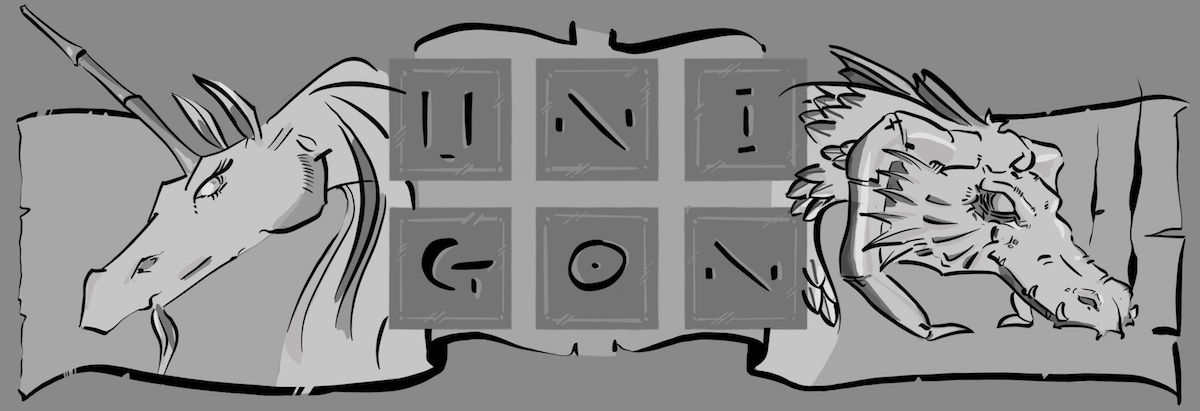My good friend, Matt Seilback, approached me a few months ago with a passion project of his. Matt and I met at my previous employment where he and I immediately found in each other kindred spirits. From the outside we are an unlikely pair, he a devote Christian and I an ardent atheist. And yet, our passion of art and shared sense of humanity quickly bonded us to each other. It’s been many years and at least one company separating us since we met, yet we’ve stayed steadfast friends through all that time.
Like the story of too many this year, Matt found himself in the midst of COVID-19 looking for ways to financially support his family. As artists, even in the best of the years this can be a challenge. Your artistic voice often must be very tamed, if not outright held in check, when working in corporate settings. This is not an incrimination of corporate work, just the nature of the needs of the company are not necessarily served by one’s own inner needs as an artist. Given his situation, it was an opportunity for Matt to see how he might step closer to creating a future where his artistic vision could be better expressed and harnessed while still earning a living for he and his family.
When he came to me, he wanted to start his own company, The Curious FilmMaker, that would become a door toward such a future. He was in need of a logo, and as a friend, I could not resist but to volunteer my time to help him get a bit closer to making that dream a reality.
One of the joys of working with other artists is their clear sense of vision for what they want. They also understand intimately how to work with another artist. This is no more true than with Matt; while he had a clear vision of the overall motif he wanted for a logo, he needed my skills to help bring his ideas to life.
There is nothing worse than starting out on a project where you get an early start, fall in love with a particular direction, only to discover your client hates it. Happen to you, too? Happens to everyone, and I’ve yet to find a person who enjoys that even when its our day-to-day job. It’s the nature of things for sure, but over the many years I’ve worked on graphic design for others, I’ve discovered the sooner I can narrow in on a client’s tastes the better. Once I get an idea of that, then and only then can I jump headfirst into ideas that will largely land with them from the very first rough draft.
We spent a day or two examining logos from other companies that inspired him, gathering notes on what aspects resonated with him. Whether it was typography, line-weight, color schema, or even theme, everything was game. This was largely an opportunity for Matt to more intuitively describe his tastes without having to articulate it directly; something most of us would find challenging to put down in words but effortless to do is just by pointing to examples. And this is exactly what Matt did for me: help narrow in on elements of design that he loved (and did not love), freeing me up to spend more time iterating on composition and content without getting bogged down on stylistic choices.
For those not in the know, Canva is an amazing tool for graphic design work. While it’s a web-only tool geared toward digital design with easy exports to PDF and other digital platforms, I found it superior in a lot of ways to more traditional tools such as Adobe Illustrator and Affinity Designer (which I love). Canva is frankly an amazing tool for rapidly prototyping, and in a lot of ways is a complete design studio for jobs such as this. I’d export progress to my local machine and then share in a common Slack channel for Matt to comment on. This allowed us to seamlessly collaborate when convenient for ourselves, especially as we both have other full-time jobs along with a two-hour time zone difference separating us. Even with this kind of asynchronous communications, it presented zero hinderance to us, and we maintained that sense of carefree collaboration and virtuous feedback loop that feeds the soul of every artist, myself included.
We wanted a logo that spoke of Matt’s passion for the craft and long-history of videography stretching back to the days of analog film. There were some attempts for more abstract design elements in the logo, but ultimately we decided on a more direct approach, including the silhouette of a vintage film camera that Matt provided. It was straightforward enough to use Inkscape to produce a reliable vector outline of the image, and then manipulate it to create perspective while providing a solid outline to allow me to separate it from the background when I composited it within Canva. Finally, given Matt’s passion as an artist is to reveal the quirky, the curious, the inner-most passions of his subjects, we wanted a logo that even in typography nodded to this quality of Matt, thus I settled on both a serif and sans serif font to juxtapose Matt’s rounded sensibilities in a modern setting.
I’m excited for Matt. He is an amazing friend and generous human being. But more than that, he is a visual story-teller who is out to tell other peoples’ stories. I’m excited to hear, and more importantly, see what he has to say. For my small part, I’m grateful to be a part of his journey.







